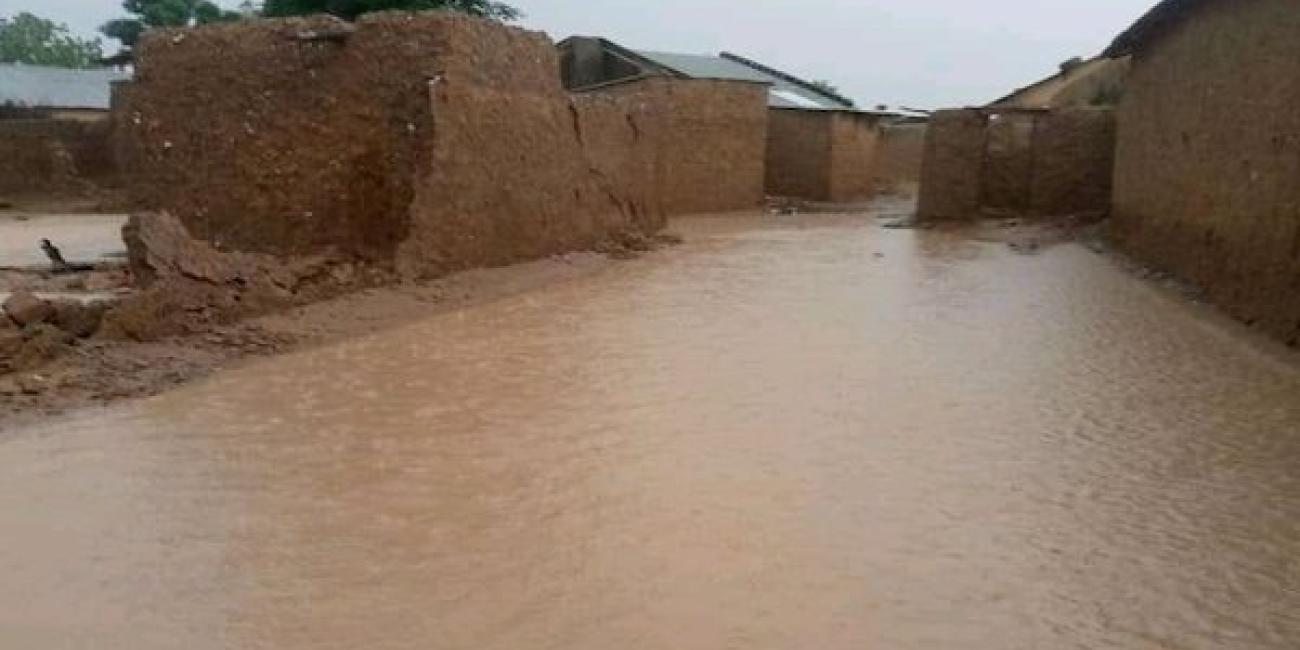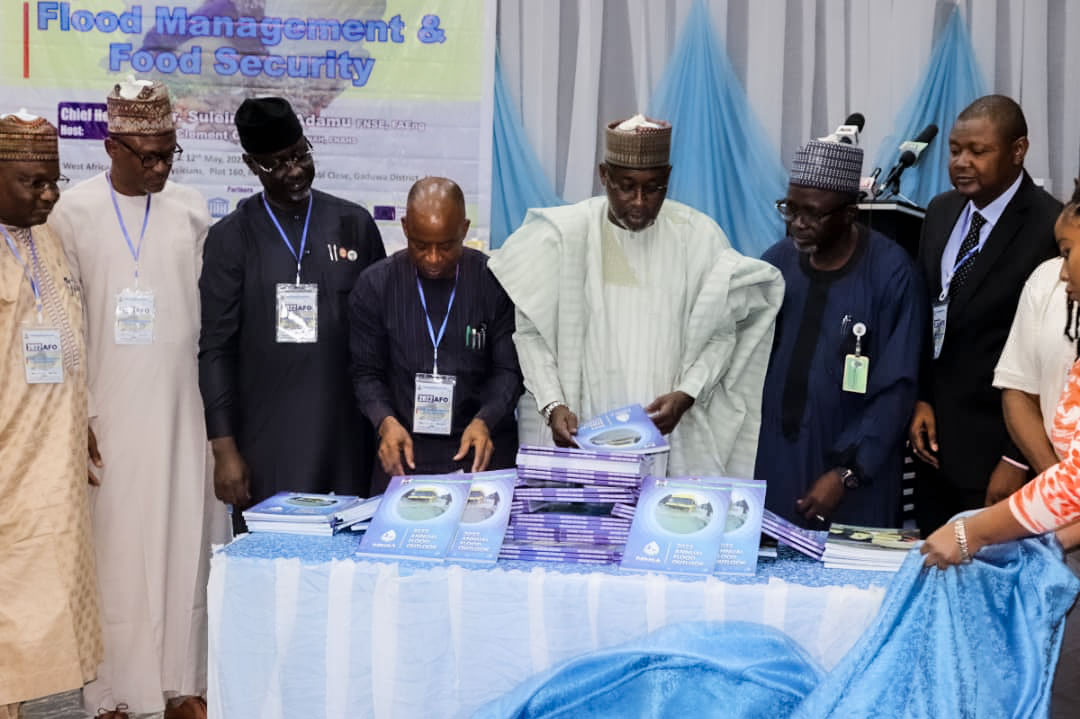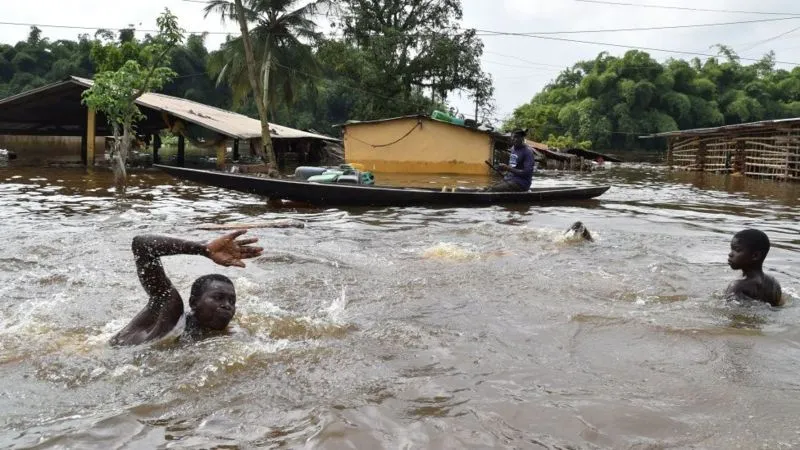Abdullahi Adamu, a visually impaired resident of Dedere, one of the communities in Obi Local government areas of Nasarawa state fears that he and other members of the community might have to battle widespread hunger in the coming days and months.
He is only one out of thousands of residents who have continued to count their losses following a heavy downpour that wreaked havoc in the community on Friday, leaving houses, farms and crops destroyed. The flood lasted for over 10 hours
“I do not know what to do, “said Adamu who lost some of his property to the incidence”. “It is unfortunate that we are having to always deal with the challenge of flooding in our community”.

Destroyed houses
Climate change is said to be increasing the recurrence and intensity of flooding across the country and mainly around border sea and river states. In urban areas, floods incidences have been aggravated further following the rapid urbanization with the deficit in waste management causing poor drainage, according to a report titled an Emergency Plan of Action (EPoA) Nigeria: Floods Anticipation by the International Federation of Red Cross and Red Cresent Societies.
Farmlands, for instance, have been washed away with a loss of crops amounting to billions of Naira. In 2020 for example, Kebbi – the country’s biggest rice-producing state, vast farmlands were completely submerged in flood waters, while in Jigawa state, a total of 18 out of 27 Local Government Areas (LGAs) were affected, with Gwaram, Birnin Kudu, Kirikasamma, and Gumel as the worst hit.
This is not the first-time flood is hitting the community due to the landscape of the area. But this appears to be the worse in terms of impact, said Ishiaku John, one of those affected by the flooding who has asked the state government to provide humanitarian aid to those who have lost their livelihoods as a result.
“For the past three months, we have been experiencing heavy flooding whenever it rains in Dedere,” he said. “The rain on Friday would have to be the heaviest so far because it destroyed several farms and foodstuffs, and our fear now is that hundreds of residents may likely be without any food in the coming days”.
Recall that In 2021, at least eight persons were confirmed dead and scores of others missing after a flood tore through several communities destroying bridges, houses and other property worth millions of naira in Keffi, Obi and Keana Local government Areas of the state.
A schoolteacher in the community identified as Azi Suleiman said that those living very close to the banks of the Dedere river were the worse hit by Friday’s flooding which according to him, also led to the destruction of bridges.

Houses submerged by flood in Karu LGA (2016).
Reacting to the incident, the caretaker of Dedere Development Area, Dauda Danladi-Agbo, said that the destruction caused by the flood signals an impending hunger and hardship in the area.
Agbo said that he had personally written to the Ministry of Environment and Chairman of Obi Local Government Council to come to the aid of the community as its residents now live in fear.
In 2020, the state government announced the demolition of over 40 illegal structures built along waterways in three local government areas of the state.
The Chief Environmental Officer at the state Ministry of Environment and Natural Resources, Mr Abubakar Mohammed, was quoted as saying that the measure was taken by the state government as part of efforts to avert increasing flooding in the state.
“The lukewarm attitude of some residents towards the government’s directive against building structures on waterways also informed our decision to embark on the demolition,” he said.
NIHSA flood forecast
In its 2022 Annual Flood Outlook, (AFO), the Nigeria Hydrological Services Agency, (NIHSA) predicted that 233 LGAs in 32 states of the Federation and the FCT fall within the Highly Probable Flood Risks Areas, while 212 LGAs in 35 States of the Federation including FCT fall within the Moderately Probable Flood Risks Areas.
The remaining 329 LGAs fall within the probable flood Risks Areas.
Presenting the 2022 AFO to the Public in Abuja, Nigeria’s Minister of Water Resources, Engr. Suleiman H. Adamu informed that the level of floods in the Highly Probable Flood Risks Areas between the months of April and November is expected to be high in terms of impact on the population, Agriculture, livelihood and livestock Infrastructure and the Environment.
According to him, part of 57 LGA’s in the Country fall within Highly Probable risks areas in the months of April, May, and June; with part of 220 LGA’s in the months of July, August and September; and part of 38 LGA’s in the months of October- November 2022.

He called on stakeholders to consider the Flood Forecasts, Flood Early warning and information that are being issued by NIHSA in its AFO, monthly and weekly alert bulletins for reducing incidences of Flooding in the country.
The minister also noted that AFO, will no doubt go a long way to save our dear Nation from significant losses of lives, properties and other critical infrastructure.
More rain expected
In its 2022 seasonal rainfall and temperature report, the Nigerian Meteorological Agency (NiMeT) predicted that more than 2000mm of rainfalls are expected in areas of southern Nigeria while 390mm are projected in the Northern Part of the country from the week of 20 June and beyond.
In its emergency Plan of Action (EPoA) report, the International Federation of Red Cross and Red Cresent Societies, said that this trend follows the same path as in previous years, which led to key flooding affecting almost 20 states in the country with more than 10,000 households randomly affected in various ways, with always at least 3,000 households homeless and/or displaced.
The report showed that there has been an observed pattern of flooding in Nigeria since 2019, with the menace becoming the second most recurrent hazard affecting the country, after the epidemics.
According to the report, the high flooding period generally recorded from August to October is usually characterized by the collapse of major dams, overflow of riverbanks and heavy occupation of residential areas or environment by a large mass of water due to heavy flow of run-off rainwater, uprooting and washing off residential buildings, blowing away roofs of buildings.
Recall that a 2020 World Disaster Report estimates that extreme precipitation events will be more frequent and more intense in the coming years, particularly in the midlatitudes and wet tropical regions of the world, including Nigeria.
In its report that looked at the changes in the climate system and the associated impacts on natural human systems, the Intergovernmental Panel on Climate Change IPCC indicates that increasing global warming may result in a larger fraction of the global population being affected by major river floods.
